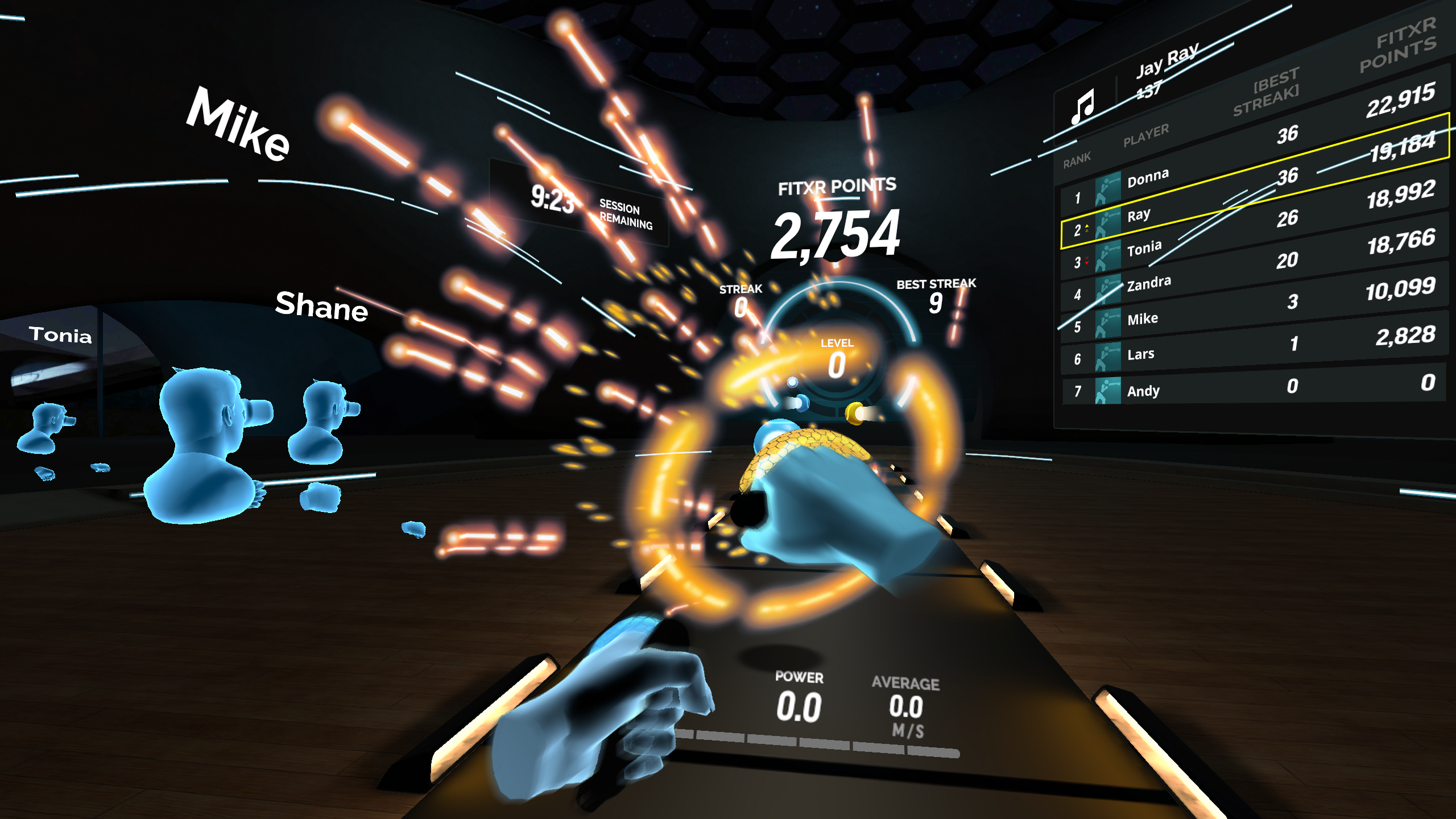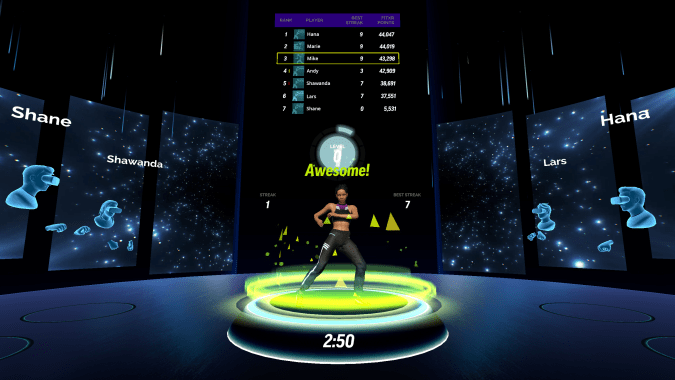FitXR, formerly BoxVR, has developed a virtual reality experience for home training over the past three years. The pandemic has helped people avoid having to go to the gym, but there is still a feeling that exercising at home is a poor substitute for the sweat and hustle and bustle of a health club. For this reason, the company is building a social component for its platform so that users can train together with their friends. Equally important, FitXR is switching from a one-time payment to a monthly subscription, enticing users with the promise of doing a new workout every day. Is the world ready for a VR health club? Probably not, but FitXR is hoping for a bold first step into this future.
When the title was released it focused on VR boxing using a system that resembled a rhythm game as objects flew towards you. Then when the name changed it expanded to include dance fitness classes, but that was never the ultimate goal. Co-founder Sam Cole stated that the company is “building on the concept of becoming a virtual health club,” with a range of courses on offer. He added that the benefit of VR is that “you can get lost in an experience” without being distracted. While the workouts are tough, they’re a little more interesting than soulless hitting a static bag in the corner of a renovated warehouse.
For FitXR’s new vision to work, Oculus had to change its policy to allow regular subscription payments in the Quest Store. Starting today, FitXR charges a monthly fee of $ 9.99 for its product. As part of this fee, users get full access to the most current class library available on the platform. A new class is added every day, each created by a team of professional fitness trainers. In the next few weeks, the platform will add its own HIIT training studio alongside the boxing and dance studios. And under a contract with Warner Music and Pete Tong’s dance label FFRR, the classes get a better soundtrack.
(“For the FitXR Steam, [Oculus] Rift and PSVR communities, ”the company says,“ we are working to bring the membership model and associated updated content to market in the near future. “)
FitXR
Users also have the option to choose from a number of new environments to train in, including a cliff top studio, an urban rooftop area, or a dance studio. Over time, new environments will be added as the company expands its class library.
FitXR is one of the first to adopt the new payment system, and Cole says the move is a “growing up moment for VR in general”. He said the “pricing model is currently very similar to console games,” where each title is sold separately or additional features are purchased through DLC. But in Cole’s word, “What VR ecosystems need is the habitual use of the headset,” which can be difficult when people have no reason to keep coming back. Cole hopes giving financial incentives for people to stay is a way to encourage wider adoption of the technology.
Existing FitXR members will receive a free 90-day trial of the new system. Should you choose not to sign up, all of the content you originally purchased will be retained. “We believed in providing long-term value for our customers because we knew that moment was coming,” said Cole. He added that the company “really wanted to make sure we were protecting these customers” and that they didn’t feel like they were under pressure in an effort to “maximize sales”. These users will also get access to multiplayer as well as some beta classes for HIIT as another reason to switch.
To test the platform’s new multiplayer functions, FitXR loaned me a Quest 2 that is loaded with a pre-release build of the new software. Cole said that it is primarily Quest 2 that will make the VR world of the future possible. Released in late 2020, this hardware is $ 100 cheaper than its predecessor, lighter, faster, and has real claims to be the first truly popular VR headset. I’ve tested the new features with some members of the FitXR team, and while this isn’t what you’re hoping for, it’s a good first step.
FitXR
To start, you’ll need to access a private classroom that you can access by entering a six-digit code on a floating keyboard. Once you’re all together, begin a class with your friend’s head and hands floating a short distance from your side. As you hit – we did a BoxVR exercise – you can see your staff’s avatars in your peripheral view. Since the system only knows the position of each headset relative to the hand controls, it’s not exactly immersive. The most useful thing you can see is how quickly they overcome the obstacles that regularly float towards your head.
What is valuable, however, is the ability to hear your friend play and laugh as you all do the workout. Even if your main focus is on your own achievement, you can’t help but take a look at your page and there will be a good sense of community. There’s a bit of silliness and artificiality to it, but it’s best to lean into this experience instead of trying to play it cool. You can’t just exaggerate the value of just having the sense of community of being with people after being stuck indoors for more than a year. No, it’s not the ability to play directly with a friend – we’re still a long way from that – but it feels like the beginning of something good.
The challenge for companies like FitXR and even Peloton is that we still want to train at home after everyone has been vaccinated. Eventually, the temptation will be to flee our homes and be among large groups of people once COVID-19 is finally left behind. “We don’t have to be the exclusive part of people’s fitness journey,” said Cole, but he believes the pandemic has shifted people’s priorities. He said if you can reduce the number of unnecessary trips you make with VR, you can have more time to live your life. He said, “In many cases, people have found that there is simply a better way to get exercise than to go to what they thought was the only option, which is to the gym.”

